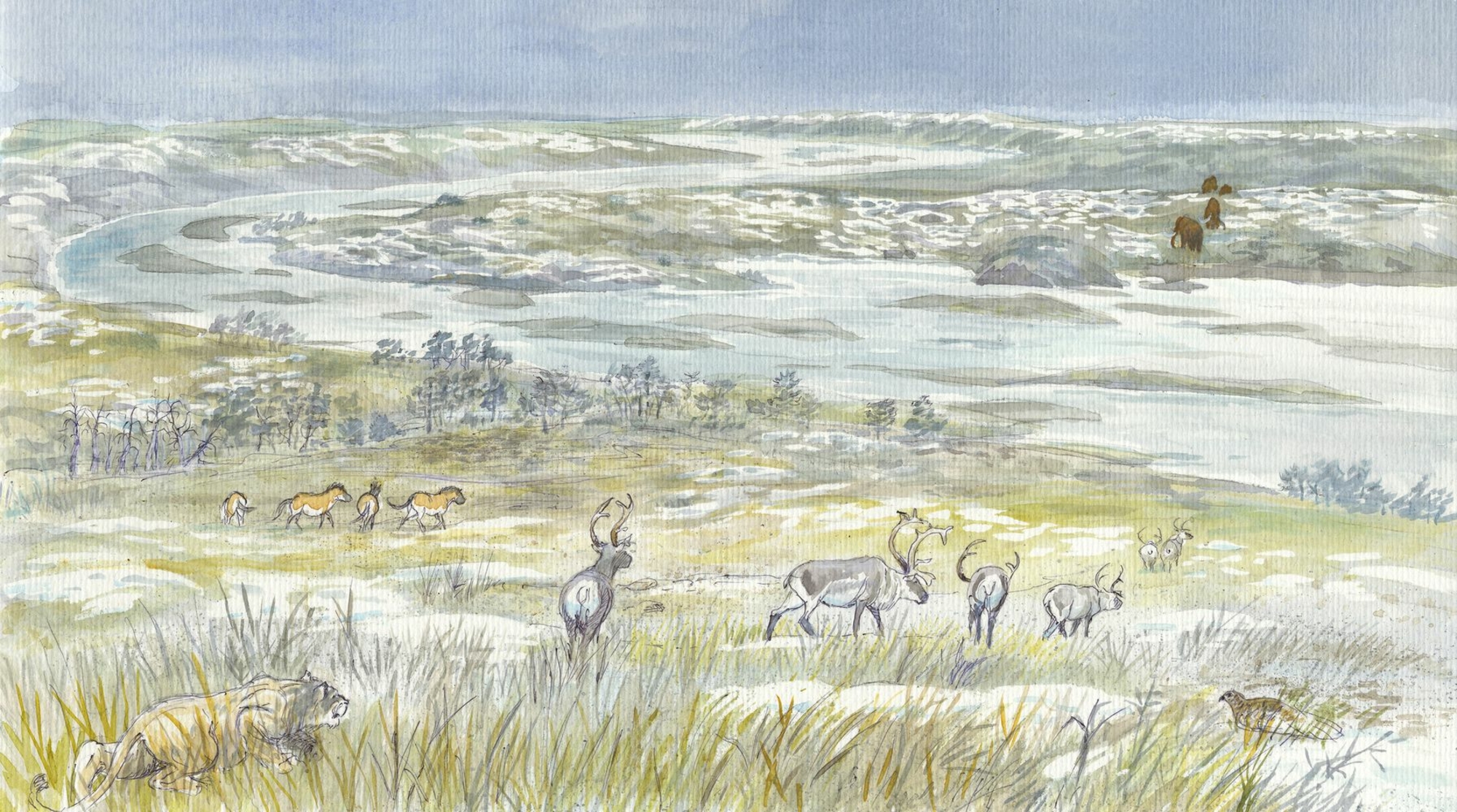
- Home
- Explore the site
- Historical and environmental context
- The Magdalenian in the Paris Basin
The most recent phase of the Magdalenian, between 14,000 and 12,500 BCE, is well represented in the Paris Basin. Since the end of the 19th century, more than 20 sites have been discovered there and explored, using surface prospections, limited sondages, preventive excavations and planned excavations (like those at Étiolles and Pincevent, the other famous site in Seine-et-Marne).
The particularities of an evolving Magdalenian
In the Paris Basin, Magdalenian sites dating from earlier than the culture’s most recent phase are very rare. Their detection is probably made difficult by the local geology of deposits from the Quaternary. This near absence of the Early Magdalenian, known elsewhere for its ornate objects, partly explains the rarity of artistic remains in this region. This lack of artistic remains, including during the most recent phase, therefore links the Paris Basin to the more septentrional and later manifestations of the Magdalenian. It was also perhaps an early sign of the significant mutations that accompanied the Azilian culture from 12,500 BCE.
An observatory for the Magdalenian way of life
The Paris Basin is home to several very well-preserved deposits, like Étiolles, and therefore enables us to accurately discern these mutations in the Magdalenians’ way of life. Not only can we start to understand daily life in these nomadic camps, we can also, by comparing the tasks carried out on different sites in different seasons, identify an annual cycle of activities. For example, the Paris Basin is the region in Europe where the organisation of Magdalenian hunting can be best apprehended and compared to that of Azilian hunting.



